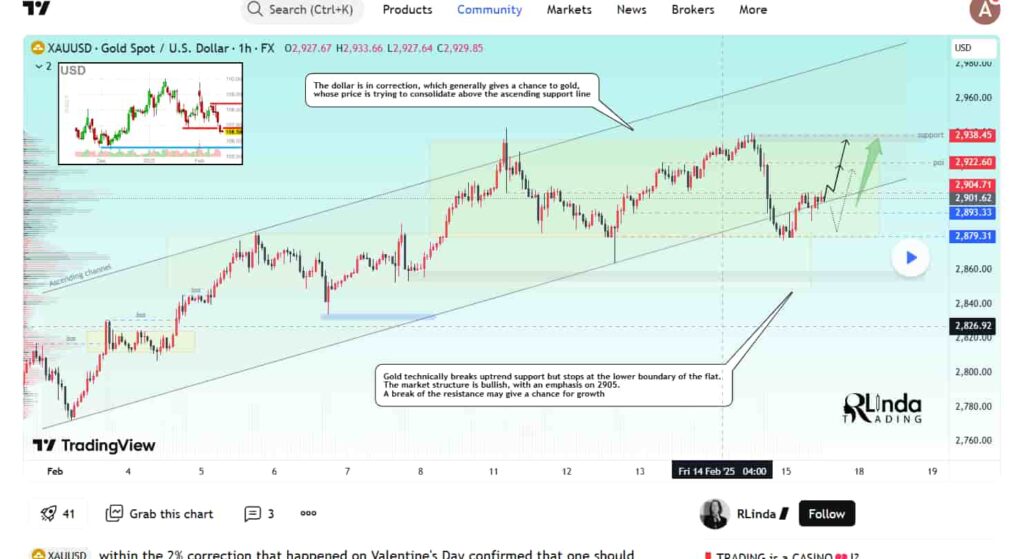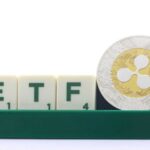Gold price (XAU/USD) is struggling to hold above $2,900 after plunging to a low of $2,877 before staging a modest rebound. Despite the recovery, the metal remains under pressure, struggling to reclaim higher ground.
With geopolitical tensions escalating, Federal Reserve uncertainty looming, and trade tariffs fueling market volatility, investors are closely monitoring key technical levels that could dictate gold’s next move.

At press time, gold is trading at $2,898, posting a 0.55% daily gain. Despite the near-term struggles, the metal has maintained strong momentum, recording a year-to-date gain of 10.8%.
Gold technical analysis: Key levels to watch
Gold continues to trade within an ascending channel, with a false breakdown confirming demand at lower levels. The market remains bullish, with price action consolidating within the $2,880 – $2,940 range, where $2,904.7 stands as the key resistance level.

A break above $2,904.7 could open the door for a rally toward $2,922.6 and $2,938.45, strengthening the bullish outlook.
Conversely, failure to hold $2,904.7 could trigger a retest of $2,880 – $2,893 before another breakout attempt. A confirmed break below $2,880 would shift momentum bearish, with $2,893 and $2,880 acting as immediate support levels, as noted by analyst RLinda.
Market drivers: Trade and fed policy in focus
Gold’s next move will likely be shaped by geopolitical tensions and renewed trade war concerns, with market sentiment increasingly tied to developments in U.S. trade policy and Federal Reserve guidance.
President Donald Trump’s proposal for reciprocal tariffs and potential levies on automobile imports by April 2 has heightened fears of a global trade war, prompting investors to turn to gold as a hedge against economic instability.
Beyond trade risks, all eyes are on the Federal Reserve, with upcoming FOMC minutes and jobless claims data expected to inject volatility into the market. With rising uncertainty, traders remain focused on these key macroeconomic drivers, as any escalation in global risks could provide the next major catalyst for the metal.
Gold’s path to $3,000
With gold maintaining momentum, the AI model projects that it could hit $3,000—a long-anticipated high—by the end of Q1 2025. Reaching this level would require a 3.39% rally over the next month, which appears feasible given the 6% surge in just over a month.
With geopolitical risks, trade tensions, and shifting monetary policy driving market uncertainty, gold remains well-positioned for further gains. However, its ability to hold key support levels will be crucial in determining whether the rally can sustain momentum.
Featured image via Shutterstock








